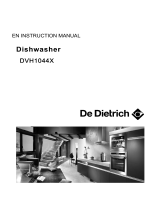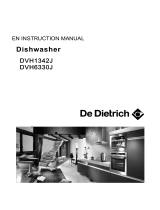
To review the section on troubleshooting Tips
will help you to solve some common problems
by yourself .
Dear Custo mer,
Pleas e carefu lly r ead this manual b efor e using t he
dishw ash er, it will hel p you use and maint ain the
dishw ash er prope rly.
Pass it on to a ny s ubsequent owner of th e ap pliance.
This manual contains sections o n safety Inst ructions,
Operating Instructions, Installation Instructions and
Troubleshooti ng Tips, etc.
Keep this ma nual for futu re reference.
If you can not solv e the problems by yourself ,
please ask for the help of professional technicians.
The manufa cture r, following a policy of constant
dev elopment and updating of the product, may
make modifications witho ut giving prior notice .
If lost or out-of-date, you can receive a new user
manual from the manufacturer or responsible
vendor.
1) Safety Instructio ns.............. .......................1-4
2) Quic k us er g uide........................ ..................5
3) Operatin g Instru ctio ns.. ...... ...... ...... .............6
4) Prior to f irst time use..... ...............................7
5) Prep arin g an d loading dishe s................ .....12
6) Start ing a wa shing p rogram.......................1 4
7) Main tena nce and cle aning..................... .....16
8) Installation I nstr uction.. ...... .......................18
9) Troubles hooting Tip s.................................21
Loa ding the ba skets ac cor ding to En50242
Con trol Panel... ...... ...... ...... ...... ...... ...................6
Dishwasher Feature s.... ........................ .............6
A.Water Sof tener..... .................. ...... ...... ............7
B.Loading the Salt into the S often er.. ..................8
C.F illing the Rin se Aid Dispe nser........................ 8
D.F unction of Detergent. ........................ ............9
Rec ommendations for lo ading and unloading
the dish washer. ...... .............................. ...........12
Standar d loading pattern....................... ...........13
Was h Cycle Table................ ........................ ....1 4
Turning on t he Appli ance..... ........................ .....1 4
Cha nging th e Program mid-cycle...... ................15
At the e nd o f the Wash C ycle...... ...... ...... ...... .....1 5
Filter System.... ...... ...... ...... ...... ...... .................16
Car ing for th e Dishw asher............................ .....17
Pos itioning the Applianc e.................................18
Abo ut Powe r Conne ction................. .................18
Wat er conne ction.... ...... ...... ...... ...... ...... ...... .....19
Start of dishwas her. .........................................20
Bef ore calling for se rvice....................... ...........21
Erro r co des ........................ ........................ ....2 2
Tec hnic al in formatio n............................ ...........23

























